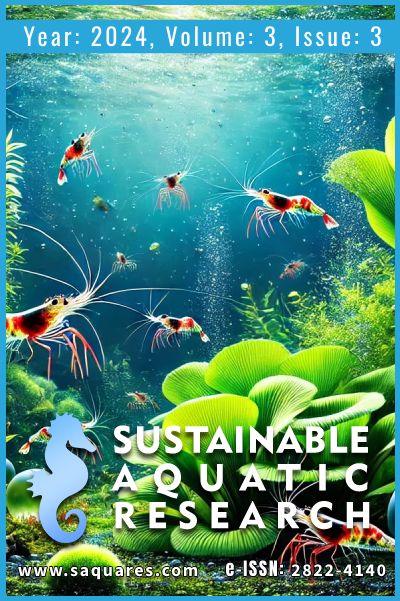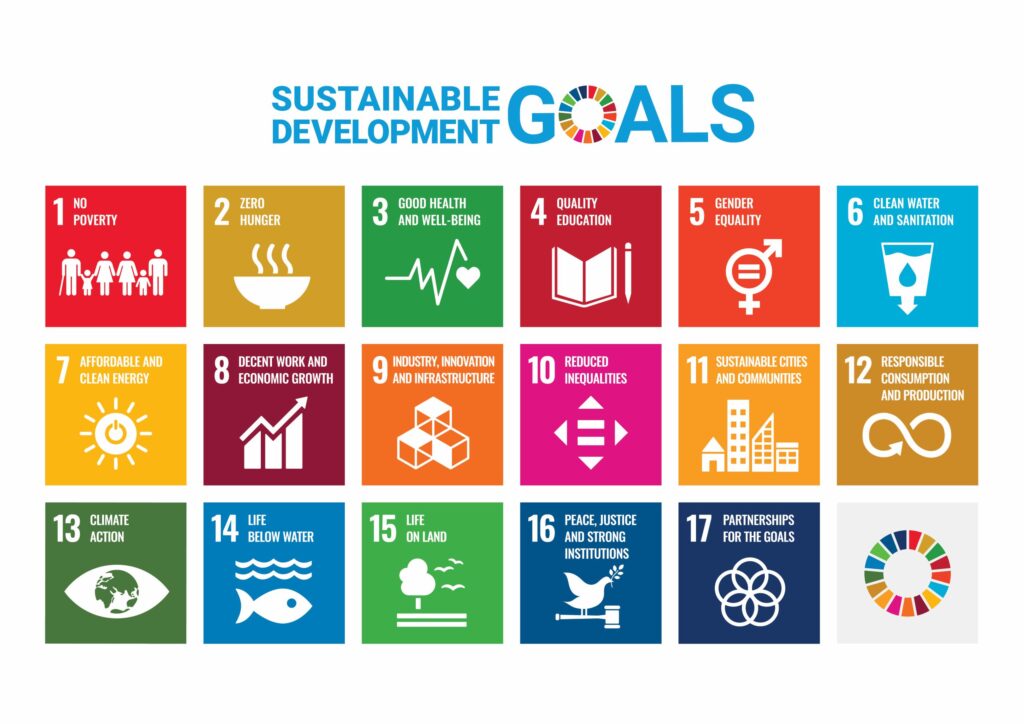Investigation of The Presence of Escherichia Coli and Salmonella spp. in Seafood Sold in Izmir
DOI:
https://doi.org/10.5281/zenodo.14559469Keywords:
Seafood, Fish, Salmonella, Escherichia coli, food controlAbstract
Seafood is a valuable source of animal protein that is consumed raw, partially cooked, or fully cooked in various cultures. Due to their high water and protein content, along with a near-neutral pH, they are conducive to the growth of various microorganisms. Microorganisms can be found in freshly caught seafood and can be transmitted by cross-contamination from humans during transport, gutting, sale at fish stalls or from substances added during seafood processing. Salmonella is not part of the natural microbiota of aquatic organisms. The presence of Salmonella in seafood indicates fecal contamination or cross-contamination during transport and storage. Escherichia coli is usually found in faecally contaminated water or food and is an indicator of poor hygiene. This study investigated the presence of E. coli and Salmonella spp. in 50 seafood products sold in Izmir. The samples subjected to analysis included trout, red mullet, sea bream, sole, frozen haddock, bogue, sea bass, seabream, saddled seabream, red porgy, stuffed mussel, striped catfish, sardine, bluefish, salema fish, salmon, mackerel, comber, anchovy, white grouper, annular sea bream, horse mackerel, oyster, picarel, squid, shrimp, chub mackerel. As a result, E. coli was detected in 21 of the samples analysed, while Salmonella spp. was detected in only 1 sample. The total coliform count was found to vary between 1.30 and 5.85 log cfu/g. These results showed that a significant amount of E. coli was present in seafood products and that the level of faecal contamination, and hence the potential hazard, was high. Therefore, it is necessary to increase efforts to prevent cross-contamination during the production, distribution and sale of seafood products, pay more attention to hygiene and sanitation practices, and pay special attention to personnel hygiene.
References
Adesiji, Yemisi O., Vijaya Kumar Deekshit, and Indrani Karunasagar. 2014. “Antimicrobial‐resistant Genes Associated with Salmonella Spp. Isolated from Human, Poultry, and Seafood Sources.” Food Science & Nutrition 2(4):436–42. doi: 10.1002/fsn3.119.
Amagliani, G., G. Brandi, and G. F. Schiavano. 2012. “Incidence and Role of Salmonella in Seafood Safety.” Food Research International 45(2):780–88. doi: 10.1016/j.foodres.2011.06.022.
Atwill, Edward R., and Saharuetai Jeamsripong. 2021. “Bacterial Diversity and Potential Risk Factors Associated with Salmonella Contamination of Seafood Products Sold in Retail Markets in Bangkok, Thailand.” PeerJ 9:e12694. doi: 10.7717/peerj.12694.
Bakr, W. M. K., Hazzah W A, and Abaza A F. 2011. “Detection of Salmonella and Vibrio Species in Some Seafood in Alexandria.” Journal of American Science 7(9):663–68.
Brands, Danielle A., Allison E. Inman, Charles P. Gerba, C. John Maré, Stephen J. Billington, Linda A. Saif, Jay F. Levine, and Lynn A. Joens. 2005. “Prevalence of Salmonella Spp. in Oysters in the United States.” Applied and Environmental Microbiology 71(2):893–97. doi: 10.1128/AEM.71.2.893-897.2005.
Chakravarty, M. S., P. R. C. Ganesh, D. Amaranth, Shanthi Sudha B., and Subhashini M. 2015. “Escherichia Coli - Occurrence in the Meat of Shrimp, Fish, Chicken and Mutton and Its Antibiotic Resistance.” European Journal of Experimental Biology 57:41–48.
Costa, Renata Albuquerque. 2013. “Escherichia Coli in Seafood: A Brief Overview.” Advances in Bioscience and Biotechnology 04(03):450–54. doi: 10.4236/abb.2013.43A060.
Değirmenci, İsa. 2017. “Turunç, Nar Erik ve Sumak Ekşilerinin Bazı Gıda Patojenleri (Salmonella, E.Coli, E.Coli O157:H7, Listeria Spp., S. Aureus) Üzerine Antimikrobiyal Etkisi. Yüksek Lisans Tezi.” Gıda Mühendisliği Ana Bilim Dalı, Çukurova Üniversitesi , Adana.
Halkman, A. K. 2005. Merck Gıda Mikrobiyolojisi Uygulamaları. Vol. 2. Baskı: Ankara Üniversitesi Ziraat Fakültesi Gıda Mühendisliği Bölümü Yayınları.
Heinitz, Maxine L., Ramona D. Ruble, Dean E. Wagner, and Sita R. Tatini. 2000. “Incidence of Salmonella in Fish and Seafood.” Journal of Food Protection 63(5):579–92. doi: 10.4315/0362-028X-63.5.579.
Matyar, F., A. Kaya, and S. Dincer. 2008. “Antibacterial Agents and Heavy Metal Resistance in Gram-Negative Bacteria Isolated from Seawater, Shrimp and Sediment in Iskenderun Bay, Turkey.” Science of The Total Environment 407(1):279–85. doi: 10.1016/j.scitotenv.2008.08.014.
Nguyen, Dao Thi Anh, Masashi Kanki, Phuc Do Nguyen, Hien Thi Le, Phong Thanh Ngo, Doan Nguyen Minh Tran, Ninh Hoang Le, Chinh Van Dang, Takao Kawai, Ryuji Kawahara, Shinya Yonogi, Yuji Hirai, Michio Jinnai, Shinji Yamasaki, Yuko Kumeda, and Yoshimasa Yamamoto. 2016. “Prevalence, Antibiotic Resistance, and Extended-Spectrum and AmpC β-Lactamase Productivity of Salmonella Isolates from Raw Meat and Seafood Samples in Ho Chi Minh City, Vietnam.” International Journal of Food Microbiology 236:115–22. doi: 10.1016/j.ijfoodmicro.2016.07.017.
Prakasan, Sreepriya, Manjusha Lekshmi, Parvathi Ammini, Amjad K. Balange, Binaya Bhusan Nayak, and Sanath H. Kumar. 2022. “Occurrence, Pathogroup Distribution and Virulence Genotypes of Escherichia Coli from Fresh Seafood.” Food Control 133:108669. doi: 10.1016/j.foodcont.2021.108669.
Sanath Kumar, H., R. Sunil, M. N. Venugopal, Indrani Karunasagar, and Iddya Karunasagar. 2003. “Detection of Salmonella Spp. in Tropical Seafood by Polymerase Chain Reaction.” International Journal of Food Microbiology 88(1):91–95. doi: 10.1016/S0168-1605(03)00144-2.
Shabarinath, S., H. Sanath Kumar, Rekha Khushiramani, Indrani Karunasagar, and Iddya Karunasagar. 2007. “Detection and Characterization of Salmonella Associated with Tropical Seafood.” International Journal of Food Microbiology 114(2):227–33. doi: 10.1016/j.ijfoodmicro.2006.09.012.
Yang, Xiaojuan, Qingping Wu, Jumei Zhang, Jiahui Huang, Ling Chen, Shengrong Liu, Shubo Yu, and Shuzhen Cai. 2015. “Prevalence, Enumeration, and Characterization of Salmonella Isolated from Aquatic Food Products from Retail Markets in China.” Food Control 57:308–13. doi: 10.1016/j.foodcont.2015.03.046.
Zhou, Li, Qian Ye, Qian Zhou, Jian Wang, Guanqiao Li, Jingshu Xiang, Jingyu Huang, Yuanyuan Zhao, Tianli Zheng, Haojiang Zuo, and Shijun Li. 2024. “Antimicrobial Resistance and Genomic Investigation of Salmonella Isolated from Retail Foods in Guizhou, China.” Frontiers in Microbiology 15. doi: 10.3389/fmicb.2024.1345045.
Downloads
Published
How to Cite
Issue
Section
License

This work is licensed under a Creative Commons Attribution-NonCommercial 4.0 International License.






